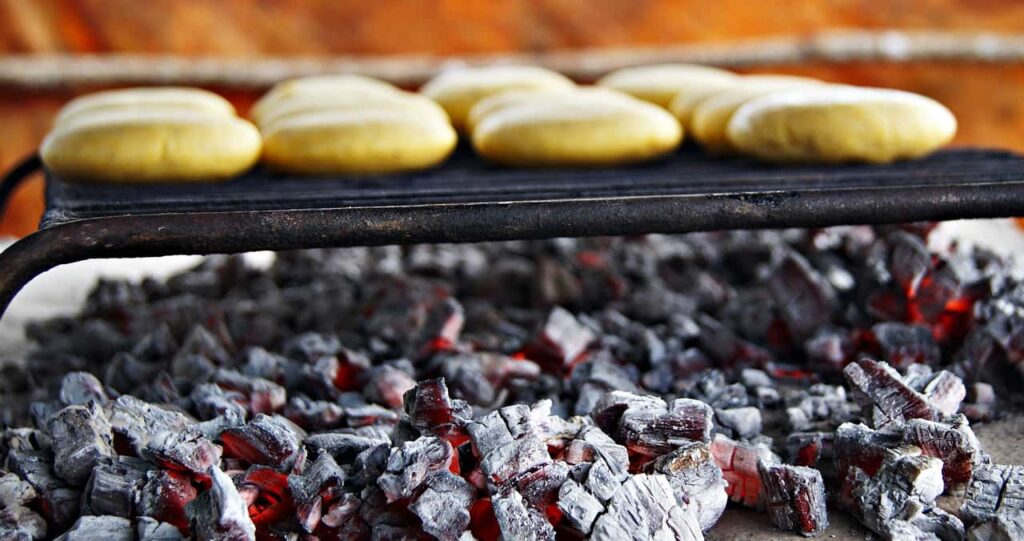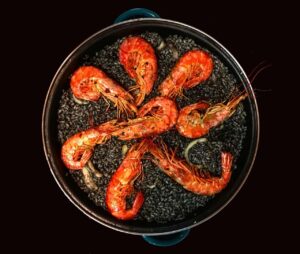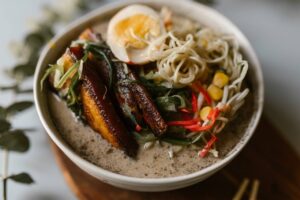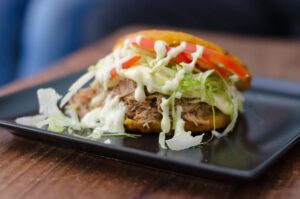Arepa (Spanish pronunciation: [aˈɾepa]) is a type of food made of ground maize dough, eaten in the northern region of South America since pre-Columbian times, and notable primarily in the cuisine of Colombia and Venezuela, but also present in the cuisines of Bolivia and other countries.
Origins
The arepa is a pre-Columbian dish from the area that is now Venezuela, Panamá and Colombia. Instruments used to make flour for the arepas, and the clay slabs on which they were cooked, were often found at archaeological sites in the area. Although it has not been specified in which country an arepa was cooked for the first time, it has been possible to define the oldest dates of the presence of maize in Colombia and in Venezuela.
Characteristics
The arepa is a flat, round, unleavened patty of soaked, ground kernels of maize, or—more frequently nowadays—maize meal or maize flour that can be grilled, baked, fried, boiled or steamed. The characteristics vary by color, flavor, size, and the food with which it may be stuffed, depending on the region. Simple arepas are filled with butter or cheese and baked. More filling varieties can be added with combinations of ingredients like beans, meat, avocados, eggs, tomatoes, salad, shrimp, or fish depending on the meal.
Varieties and Culture
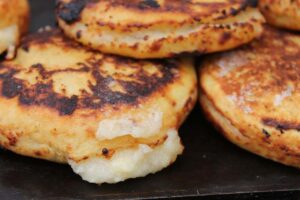
The arepa is an iconic food in Colombia, with some 75 distinct forms of preparation. According to a study conducted by the Colombian Academy of Gastronomy, the arepa is part of the Colombian cultural heritage and can be considered a symbol of national gastronomic unity.”
In the Paisa region, the arepa is especially important to the local people and sometimes accompanies all meals of the day. In addition, arepas are strung into necklaces and placed around the necks of honored dignitaries as a sign of praise.
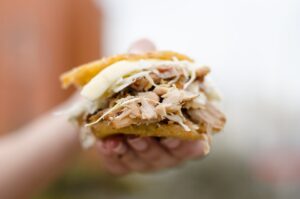
In Colombia, the arepa is sold on a commercial level in neighborhood stores, chain supermarkets and market plazas and packaged with preservatives as a pre-molded white or yellow corn dough that is ready to grill or fry at home. It is also sold in the form of industrialized corn flour that requires hydration before preparation. In addition, arepas are sold by street vendors, in cafeterias, and in neighborhood stores. Restaurants of the Paisa Region offer a wide variety of arepas, including a unique style of stuffed arepa that can be filled with eggs, meat, or cheese. Colombians in the Caribbean commonly eat a breakfast variation called arepa con huevo, which consists of a cooked arepa which has been split open, stuffed with a raw egg, and fried.
The Colombian Arepa Festival is celebrated in the following five major cities: Bogotá, Medellín, Cali, Barranquilla, and Bucaramanga. According to the program calendar, each city takes turns organizing the festival between the months of August and December.
Wikipedia contributors, “Arepa,” Wikipedia, The Free Encyclopedia, https://en.wikipedia.org/w/index.php?title=Arepa&oldid=1108320714 (accessed September 6, 2022).


